In any pursuit, it pays to have the right tool for the job. In the same way that tying flies on sharp, well-built hooks improves your hookup ratio, having a fly rod that’s designed specifically for your purpose makes your job as an angler infinitely easier, translating into more success. Specifically, in low odds games like musky fishing, where every little advantage skews the probability of success in your favor, having gear that works for you, that can withstand the paces and not fail when it counts most, is huge.
Musky fly fishing isn’t a new pursuit by a long shot, but in the mainstream fly fishing market, it’s a relatively new and rapidly growing sector of our sport. For years, most of the large rod companies didn’t see a viable profit margin in developing and selling a musky-specific fly rod. Even now, as the number of participants is growing, a musky rod is still a very niche product. As a result, a few manufacturers have designed rods specifically for the musky pursuit. But a lot of the rod offerings on the market are still not true musky tools, but rather saltwater, or otherwise “big game,” rods that have been adapted to the musky hunt, and often lack design aspects that really work for the musky fly angler.
I’ll first qualify this list with the fact that fishing styles vary across the musky’s distribution, both for the differences in environments we pursue them in and the approaches used by individual anglers. These attributes are what I consider to be essential to my own fishing style.
Blank Durability
Everything about musky fly fishing is heavy, bulky, and hard on gear. Therefore, the most important aspect to a musky rod that will consistently get the job done is durability of the blank.
The reality is that the general trend in the fly rod industry, currently, is lighter and faster blanks, which means thinner, and thus more brittle, blank walls. And while rod breakage is an inherent part of fishing, I’ve had anglers in the boat that bring their own musky-specific rods, and they break at a rate more than double mine, which get much, much more use. Simply put, if your rod can’t stand up to the daily stress of musky fishing, you’ll spend less time on the water and catch fewer fish.
Ease of Casting
I’m a firm believer in the idea that a musky fly rod that is intended to be cast with a traditional cast (rather than with a water haul) should flex into the mid-section of the rod. Stiff, ultra-fast rods that flex very little under the weight of a sinking fly line and big fly uncurling and changing directions in the cast transfer the shock involved with these mechanics into the angler’s wrist and elbow, leading to premature fatigue. In musky fishing, success is often a direct result of being able to make many quality presentations with very large flies and heavy sinking lines over the course of a long day. In other words, if an angler can’t blind cast all day with the necessary gear, their chances of success go way down.
That said, each angler’s casting style is different, and so the ideal rod action will vary from angler to angler. The bottom line is that the ideal musky rod is one that can be cast comfortably all day.

Ceramic Guides
Every fly rod that’s intended to be fished with tungsten-coated, full-sinking fly lines retrieved with the rod tip in the water or angled downward, as is very common in musky fishing (and streamer fishing in general), should be equipped with guides with ceramic inserts rather than traditional snake guides and tip tops. This is absolutely paramount, in my book. The coating of these fly lines will erode the titanium of even the highest quality snake guides relatively quickly as they are stripped through them, creating sharp edges that can slice fly lines and leaders in half. Turn a blind eye to this design issue, and tackle failure is imminent rather than possible.
I have personally lost a few lines to this culprit, and have been incredibly lucky to have never lost a fish. Recently, some manufacturers began replacing all of the snake guides and tip tops on their musky rod designs with ceramic-inserted guides, reporting zero guide grooving and erosion. Currently, most of the musky-specific fly rods on the market — including all of those that I’m aware of offered by the major rod manufacturers — don’t feature this design aspect. However, smaller companies like Reilly Rod Crafters and Chippewa River Custom Rods have begun to offer further specialized musky fishing tools, recognizing this issue.

Extended Fighting Butt
An extended fighting butt is one of the automatic design additions that most rod companies make to musky fly rods, as it adds leverage and grip real estate for boat-side fly maneuvers, which should be employed at the end of every cast. But it also aids in casting efficiency. Casting styles differ, but my personal style involves little wrist movement, and large, sweeping, ovular movements of the bicep and forearm. Having an extended butt section allows the angler to tuck the end of the rod into the elbow, and therefore brace the rod with their forearm, which will reduce fatigue over the course of a day. An extended fighting butt also expands the possibilities of casting with a two-handed water hauling technique.

Extended Grip
An extended- or double-full-wells grip gives the caster increased dexterity in the cast, allowing them to adjust the rod hand grip to fit the butt of the rod comfortably in their elbow, and to choke up on the rod blank to gain more leverage in casting.
Another advantage that this grip style affects is the encouragement of the strip set. Most musky fly retrieves involve the rod tip being pointed down into the water, or otherwise at a downward angle. The hook set should be a hard couple of strips on the fly line, rather than an upward sweep with the rod (trout set). An extended grip allows the angler to choke up on the grip after the cast has been made, tuck the butt into their armpit, and be locked into that downward position during the retrieve. It is then much easier for the angler’s brain to resist defaulting to an upward set when a strike is felt or seen, resulting in more strip sets, low rod angles, and well-hooked fish.
Consider the merit of these design attributes as you hunt for the musky fly rod that will stack a few more percentage points in your corner against the fish of 10,000 casts.
Disclosure: The author is affiliated with Reilly Rod Crafters.





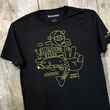
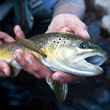









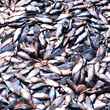
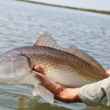




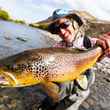









Comments
Further North replied on Permalink
Even though this is almost a year old, I hadn't seen it.
I'd rate it among the very top articles covering musky fly rods I have read, and am delighted to see coverage of the tungsten line and line guide issue.
Fishing for musky with sinking lines and regular guides is going to result in an eventual failure. It's not an "if", it's a when.
That larger commercial rod companies - big names - have not picked up on this is a real head scratcher. The relatively small increase in cost, and selling price is nothing compared to having a line sliced by a damaged guide with a big musky on the hook...
KB replied on Permalink
Must be the mud in Southern waters or something, I have zero grooving of any titanium guides and some of my rods have hundreds of days on them...
Pages